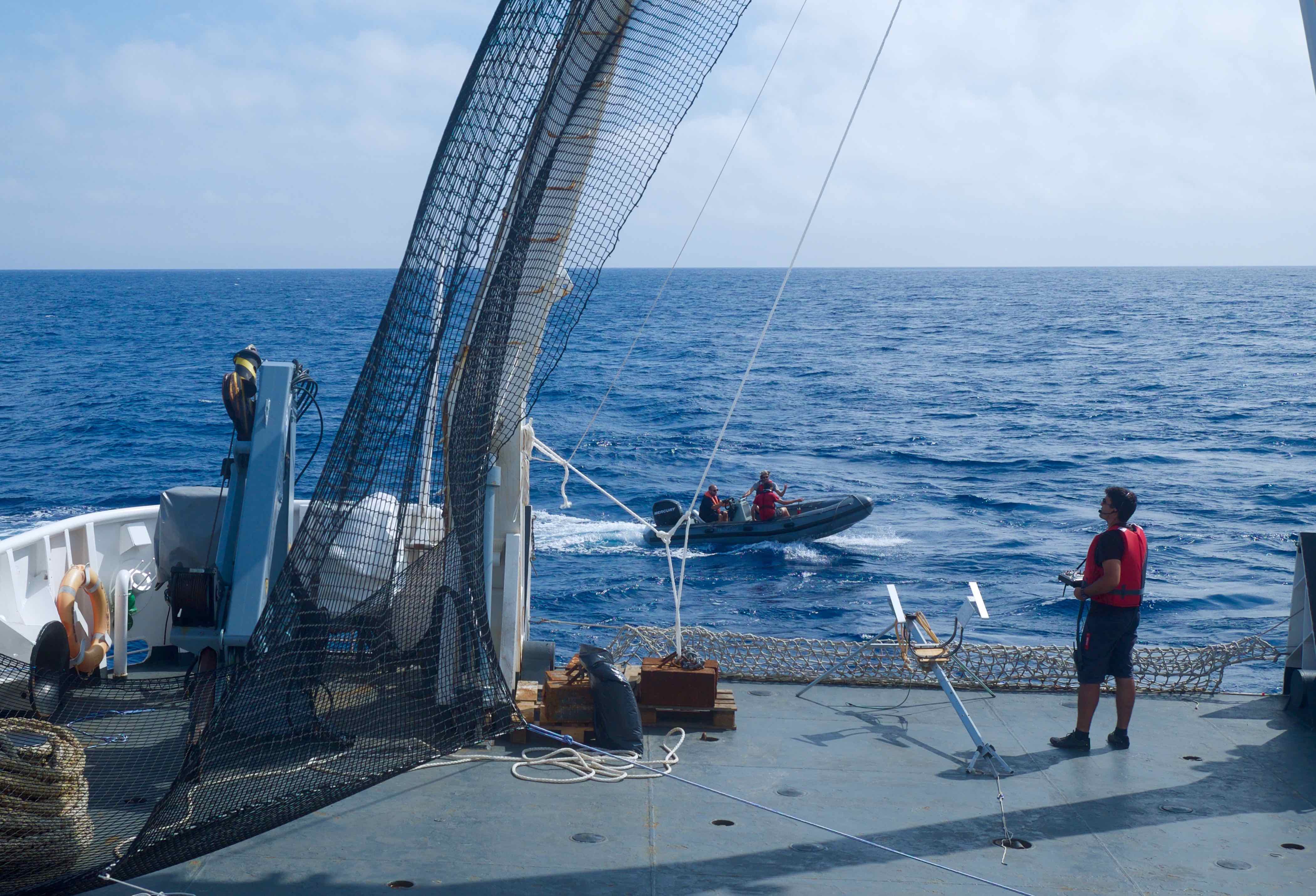Wednesday July 15th was the first slated operations day with our research vessel, the Gago Coutinho out in the open ocean with the primary goal of tracking cetaceans and using autonomous robotic platforms (aerial and underwater) to characterize the surface and upper water-column for ecological research.
The experiment commenced with flight tests for NTNU's UAV team which had had to stand down due to operating constraints, rain and confusion about how and when to fly the previous day. Two flights with Lars Semb as pilot and Krysztof Cisek as controller went smoothly but took a good portion of the morning. In between as the team was getting ready, the FEUP UAV team manage to insert one flight with a camera and NIR imager although not in a targeted way. Finally, first flight of NTNU/Norut hyper-spec imager took place with a landing on the net at 1.30pm landing. The landing was a bit rough on the wingtips which came off, partly because the ship had not been fully aligned with either a headwind or at the very least a cross-wind approach. Operating UAVs the rest of the day, it became increasingly clear that the ship's constraints and orientation had a huge influence on our operations. In addition, the AUV team pointed out that the ship needed to be at least some distance (1km) away from the closest-approach of the survey pattern for the AUVs. The constraint on how far the NTNU UAVs could fly due to a lost-in-translation effect for requirements made things even more challenging.
As things progressed, everyone onboard slowly came to understand how a conceptual idea of coordinated observations is nice in theory and easy to fathom, if hard to actually implement in the field. Not to mention we were out there in deep blue ocean!
A quiet success story however were the repeated AUV deployments including with the Xplore-1 with the HOLO-cam. Those deployments and recoveries happened uneventfully with little to no fanfare, much to our relief. Two large co-temporal surveys with the two AUVs in the water where the DOP team suggested a large pod of whales had recently transited through, were successful and a chunk of data was collected.
A DOP team led by Mónica Silva was in the area on the RHIB Pintado tagging whales. We were actively coordinating with them from the bridge with a young DOP researcher as an intermediary carrying two VHF radios; one to talk with the Pintado, and the other to the control room down below in the depths of the Gago Coutinho. Pablo did a marvelous job conveying information back and forth between scientists and technologists bridging that divide well. Crude but effective for a first attempt at moving a large ship in contrast to the nimble cetaceans.
Overall the day went reasonably well and the team's initial missteps from the mornings operations, were fine tuned with and led by the inclusion of José Braga who had arrived on the vessel the evening before. Braga was the lynchpin around which everything revolved including communicating diverse and often contrary constraints coming from the Pintado, the AUV and UAV teams, the ships crew and operational and scheduling constraints. As the day wore on, his task became somewhat easier as most of us fell in line with an agreed process of coordination onboard.
The day ended with Zé Pinto doing a number of HOLO-cam operations before the retrieval of Xplore-1 from its second and last survey, and a FEUP UAV with a visible light camera flying overhead.
A number of CMRE researchers and Pereira and Kanna commuted back to Horta by a high speed RHIB and were escorted by dolphins. National Geographic is nice to see; but its a lot more fun and awesome to see such gracious creatures barely 10 feet away moving at high speed.


